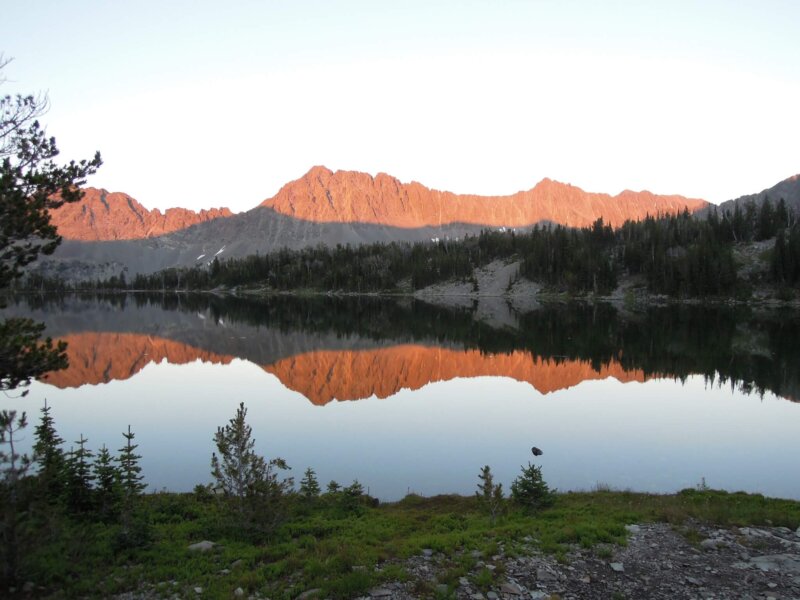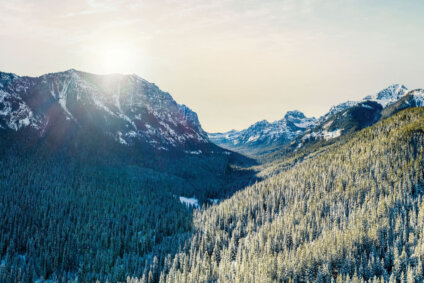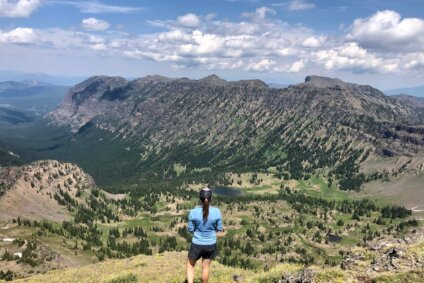Some Big Wins in the Custer Gallatin National Forest Plan Revision
The plan takes steps to protect the Gallatins, Crazies, and Pryors, but leaves a few key areas in the Forest unprotected

On July 9, the U.S. Forest Service released the final draft of the Custer Gallatin National Forest (CGNF) Forest Plan. The plan will guide the management of the nearly 2-million-acre Forest stretching from the crest of the Madison Range into South Dakota for the next several decades.
Overall, the proposed plan takes some big steps towards safeguarding the Gallatin Range and the Crazy and Pryor Mountains, with new and additional Wilderness recommendations and management prescriptions that protect habitat and the cultural significance of these special places. That being said, there are notable shortcomings in the plan. But we still have one more opportunity to improve it.
The Crazy Mountains
We are elated that the plan recommends 10,257 acres in the southern Crazies for Wilderness designation and establishes a 28,084-acre backcountry area in the central and middle parts of the range that will be closed to motorized recreation, road building, timber production, and other development.
Significantly, the Forest Service has also designated a new “Area of Tribal Interest” in recognition of the Crazies’ cultural and spiritual significance to the Apsáalooke (Crow). For too long, the Tribe has been denied a voice in the management of this island range, and we’re glad the Forest Service is taking steps to address this historical wrong.
“The Crazy Mountains stand as one of the most dynamic and sacred places in our homeland, having provided our communities with knowledge, power, and other blessings since time immemorial,” says Shane Doyle, a Crow Tribal member and founder of Native Nexus Consulting. “I’m extremely encouraged, especially given the time we’re living in, that the Forest Service chose to honor that historical and spiritual connection we have to these mountains and to protect the sanctity we go there to find.”
The Madison and Gallatin Ranges
The plan recommends 92,092 acres of new Wilderness in the Gallatin Range, including 77,630 acres in the Hyalite-Porcupine-Buffalo Horn Wilderness Study Area, which is the first time that the Forest Service has recommended Wilderness in the range. It also recommends adding 4,466 acres of Wilderness to the Taylor-Hilgard unit of the Lee Metcalf Wilderness in the Madison Range. These recommended Wilderness areas are, however, smaller than those proposed by the Gallatin Forest Partnership agreement, which MWA helped craft.
The plan fails to incorporate other key elements of the GFP agreement. It leaves out the full amount of recommended Wilderness that the GFP called for in the Gallatin Range and Taylor Hilgard, and does not recommend any Wilderness designation for Cowboy Heaven in the Madison Range. It does recommend backcountry area designations for 82,378 acres in Cowboy Heaven, Buffalo Horn, and West Pine, but fails to provide any provisions for protecting the wildlife habitat and wild character of these areas as was set out in the GFP Agreement. Finally, the Forest Plan reduces the proposed Hyalite Recreation and Watershed Protection Area by nearly half to 33,269 acres.


Cowboy Heaven (left) did not receive any protection in the Forest Plan. The Plan did recommend over 18,000 acres of Wilderness in the Pryor Mountains (right) (photos by Emily Cleveland and Bernard Quetchenbach)
The Lionhead
In the Lionhead, the plan eliminates a 20,774-acre recommended Wilderness area in favor of a 27,266-acre backcountry area and makes no mention of protecting wild character or wildlife habitat. This change underscores the permanent damage to potential Wilderness designation that occurs when the Forest Service allows non-conforming (i.e. motorized and mechanized) uses in recommended wilderness.
The Pryor Mountains
The Forest Plan recommends expanding Lost Water Canyon Wilderness and designating Bear Canyon as a new Wilderness Area, totalling 18,058 acres of recommended Wilderness in the Pryors. These additions are a testament to the hard work and long-term advocacy of MWA members and supporters. However, the Forest Service missed an opportunity to recommend Wilderness for Big Pryor and Punch Bowl.
Chalk Buttes and Ashland Ranger District
The plan designates a 5,937-acre non-motorized/non-mechanized backcountry area in the Chalk Buttes area and prohibits the construction of new roads or trails. It also maintains the prohibition of motorized and mechanized use and trail/road building in the existing King Mountain, Cook Mountain, and Tongue River Breaks backcountry areas (formerly called “hiking and riding areas”) in the Ashland Ranger District. We’re pleased that this outcome will protect the wild character of these unique eastern Montana areas.
Absaroka and Beartooth Ranges
The plan retains 802 acres of recommended Wilderness around the Timberline Lake area adjacent to the Absaroka-Beartooth Wilderness Area and heavily restricts mechanized use in the 18,712-acre Bad Canyon Backcountry Area. But it also eliminates several recommended Wilderness areas from the previous Forest plan, including Republic Mountain, Burnt Mountain, and around Mystic Lake. The plan also proposes recreational emphasis areas, which would provide for the management of a wide variety of recreational uses, for the highly used Boulder River, Cooke City, and Main Fork Rock Creek areas.
Those who submitted comments on previous drafts of the CGNF plan now have 60 days to submit their objections to the final Forest Plan draft before the Forest Service signs its record of decision, the final step in the Forest Plan revision process.
MWA will provide guidance in the coming weeks on how to submit objections. We’ll also create a guide for submitting objections to the Forest Service.
If you have questions about the CGNF Forest Plan, please email us at abertram@wildmontana.org or ecleveland@wildmontana.org.

Aubrey Bertram
Eastern Montana Field Director
Aubrey works with communities to protect eastern Montana’s prairies, badlands, and island mountain ranges. She spends her time skiing, hiking, and running, volunteering with civic organizations in Billings, exploring public lands with her two dogs, and napping on the couch with her two cats..
Email Aubrey

Emily Cleveland
Senior Field Director
Emily works on developing collaborative land management efforts and building grassroots support and partnerships in the Gallatin and Madison Ranges, the Snowcrest Mountains, the Ruby Valley, the Crazies, and the Beaverheads. She enjoys skiing, hiking, biking, camping and exploring new places.
Email Emily
Stay Connected
"(Required)" indicates required fields


